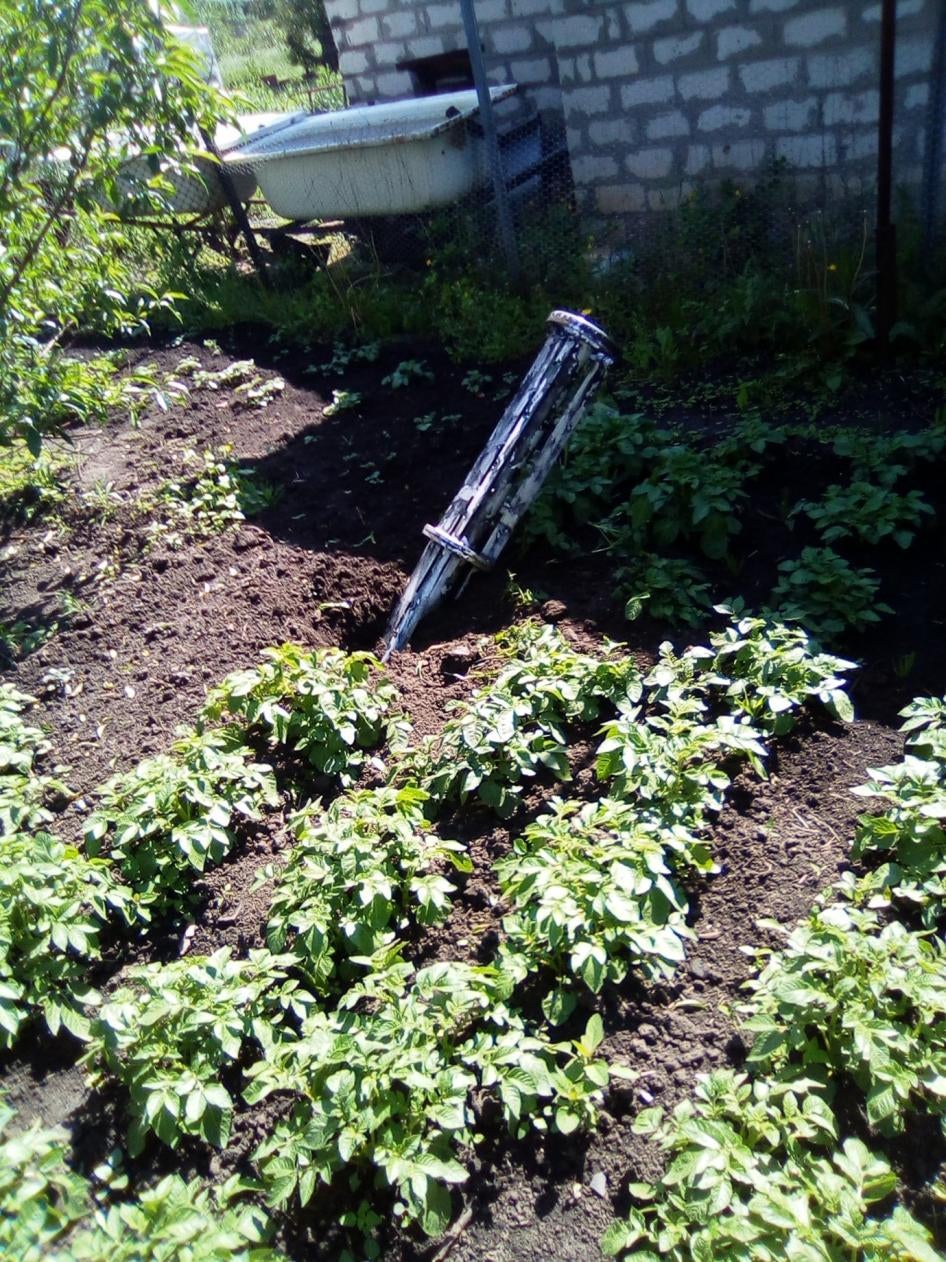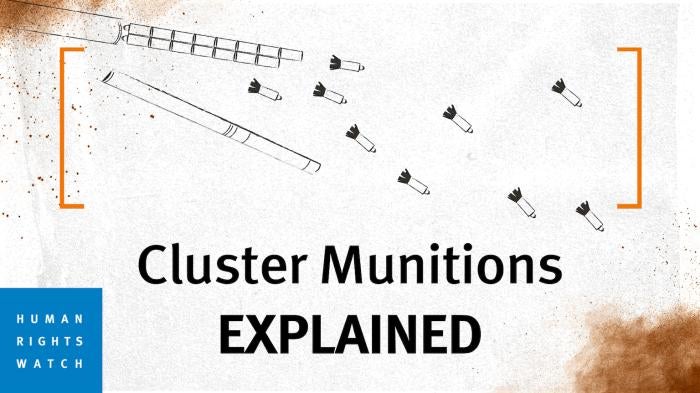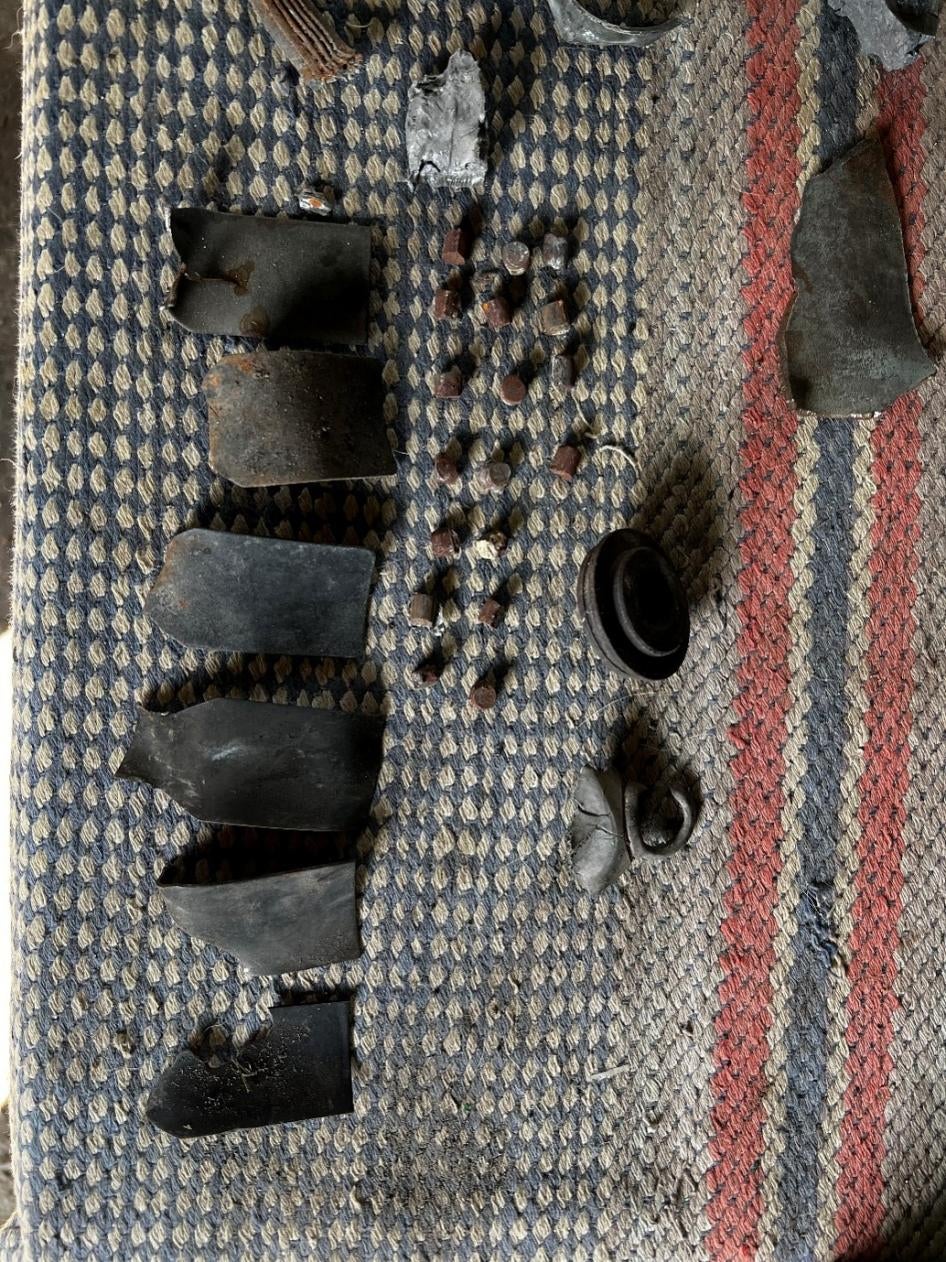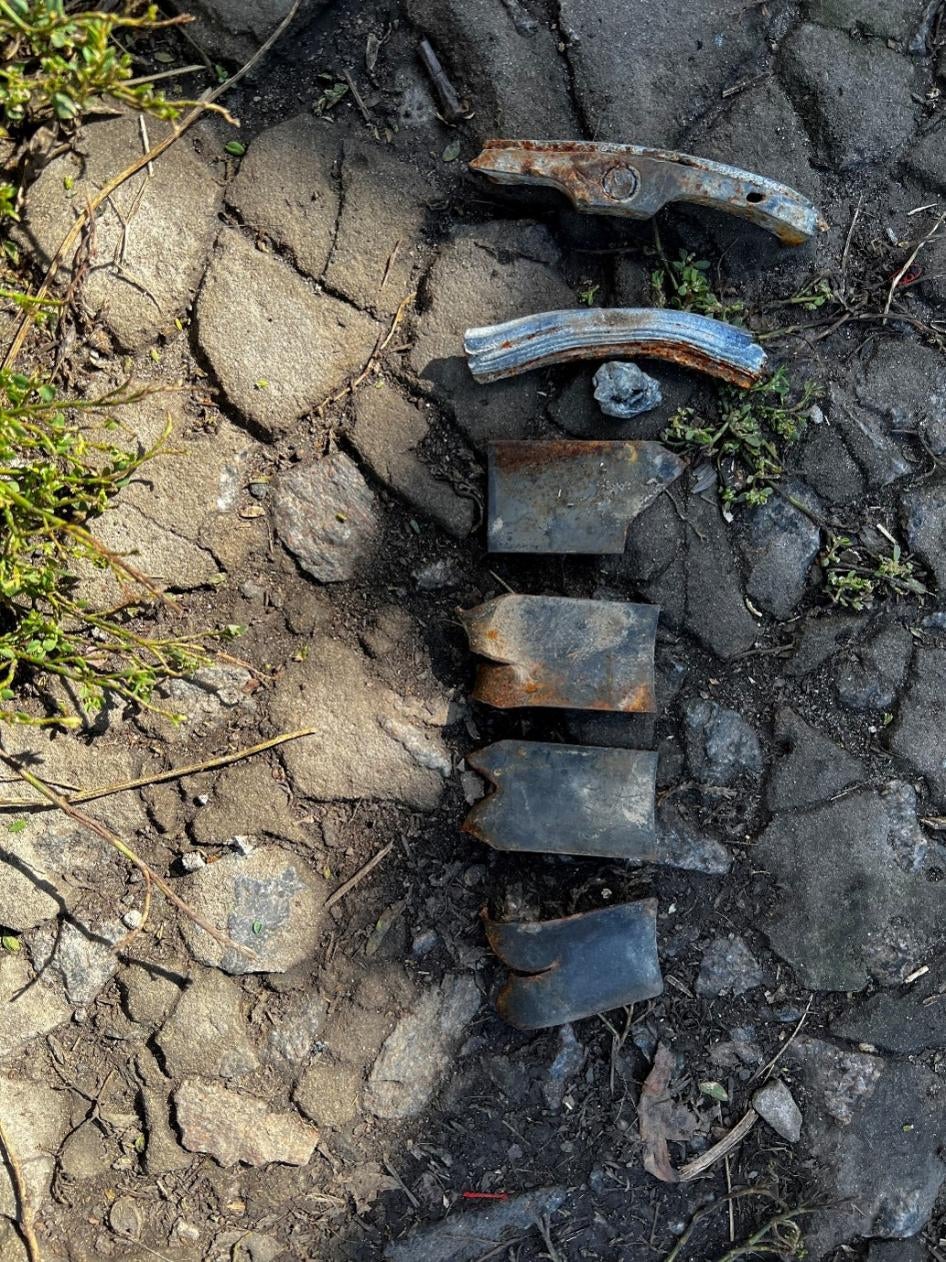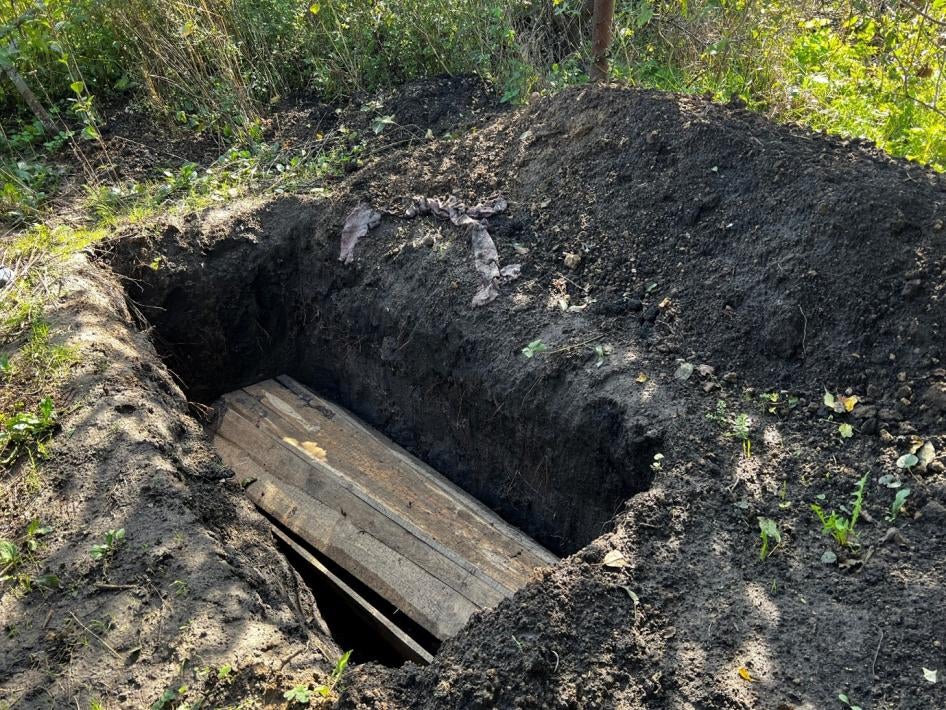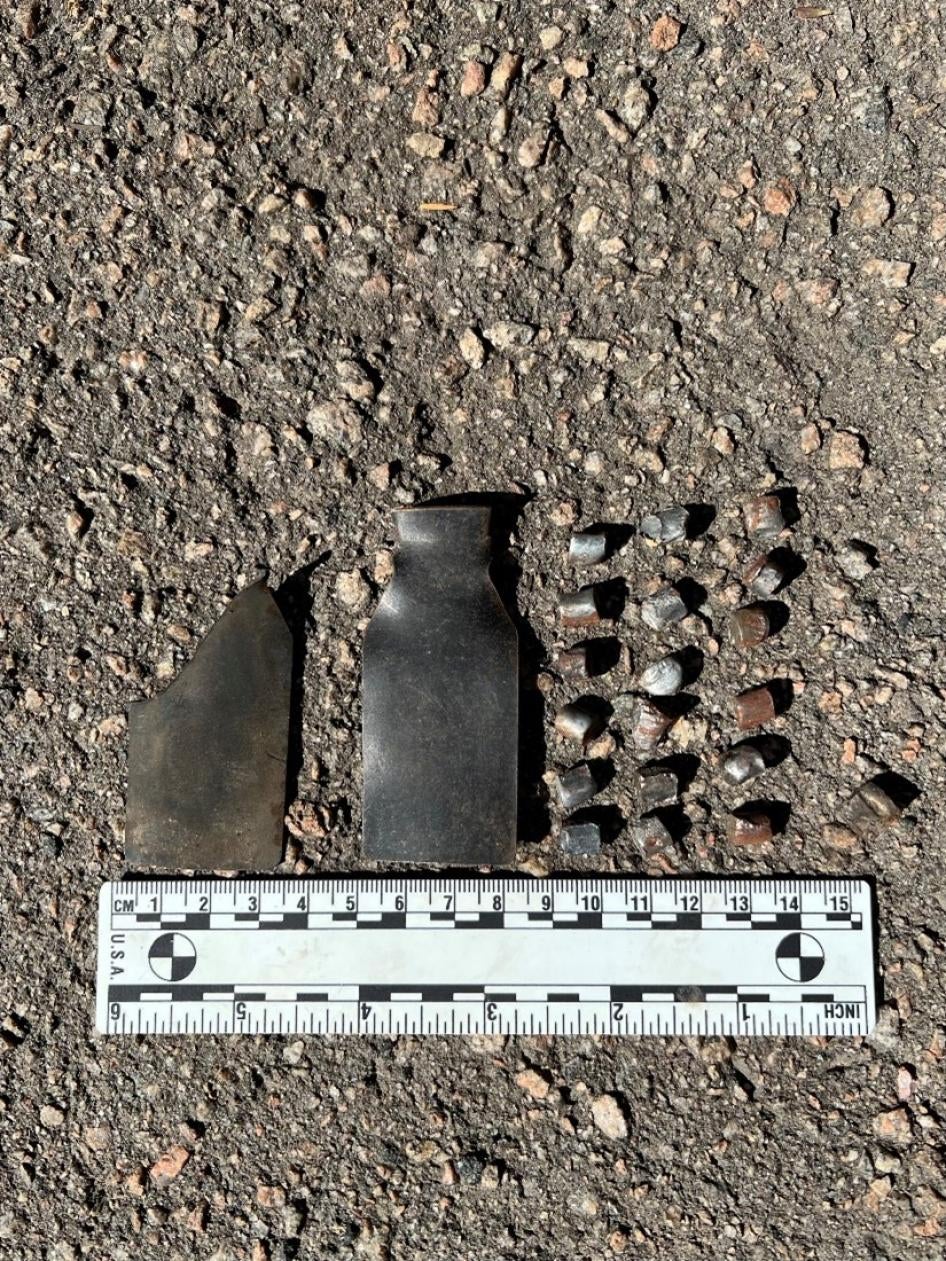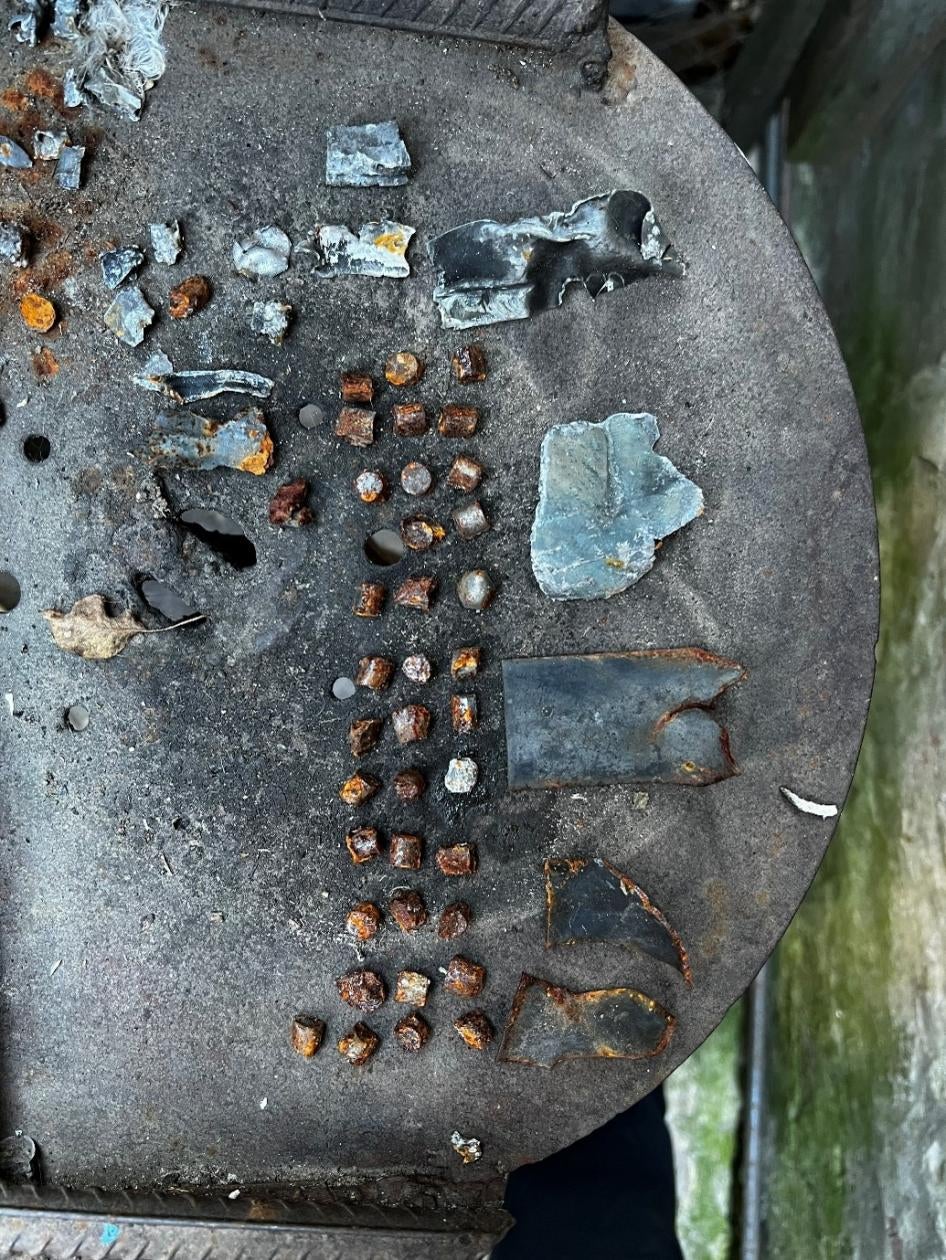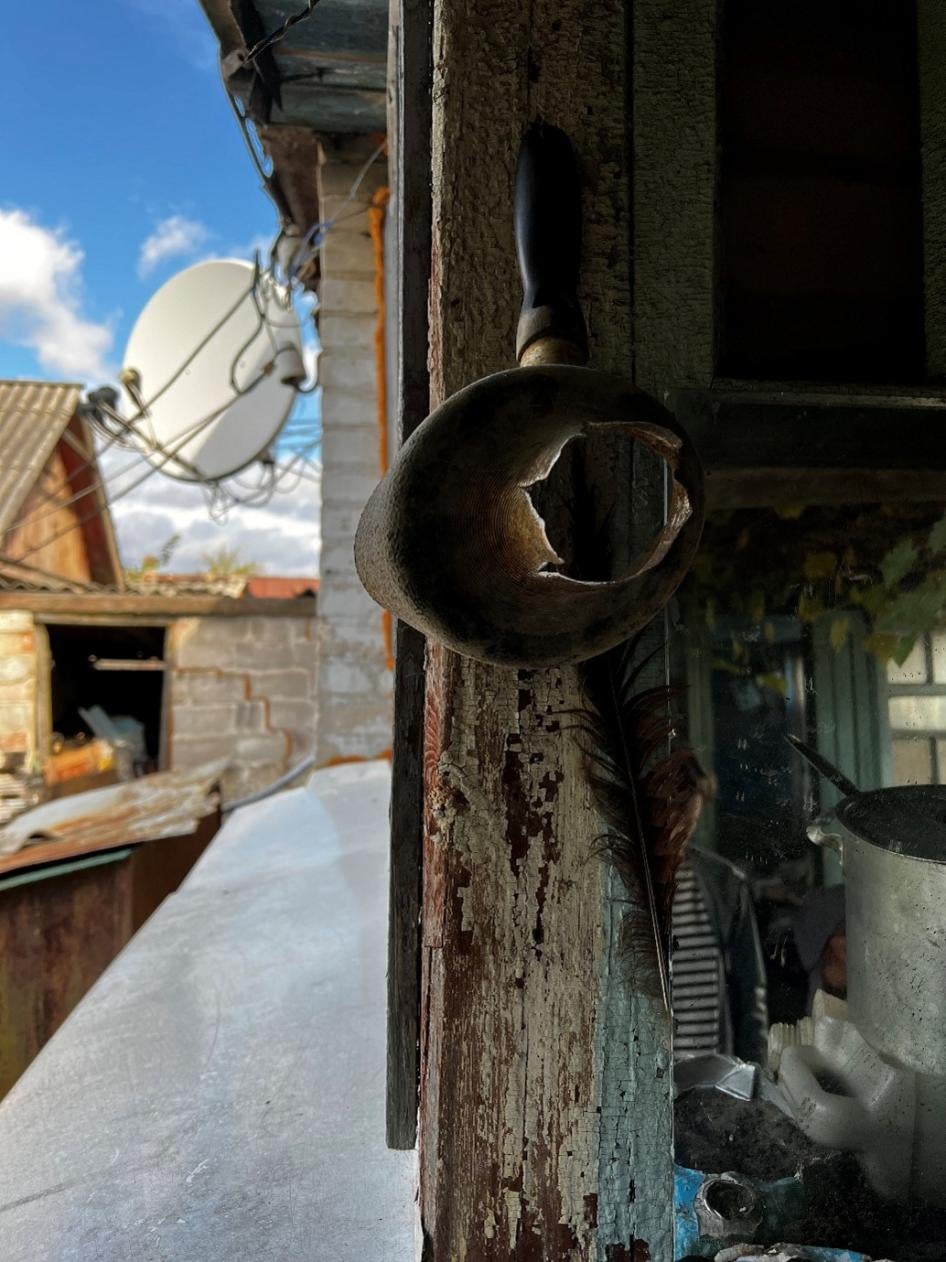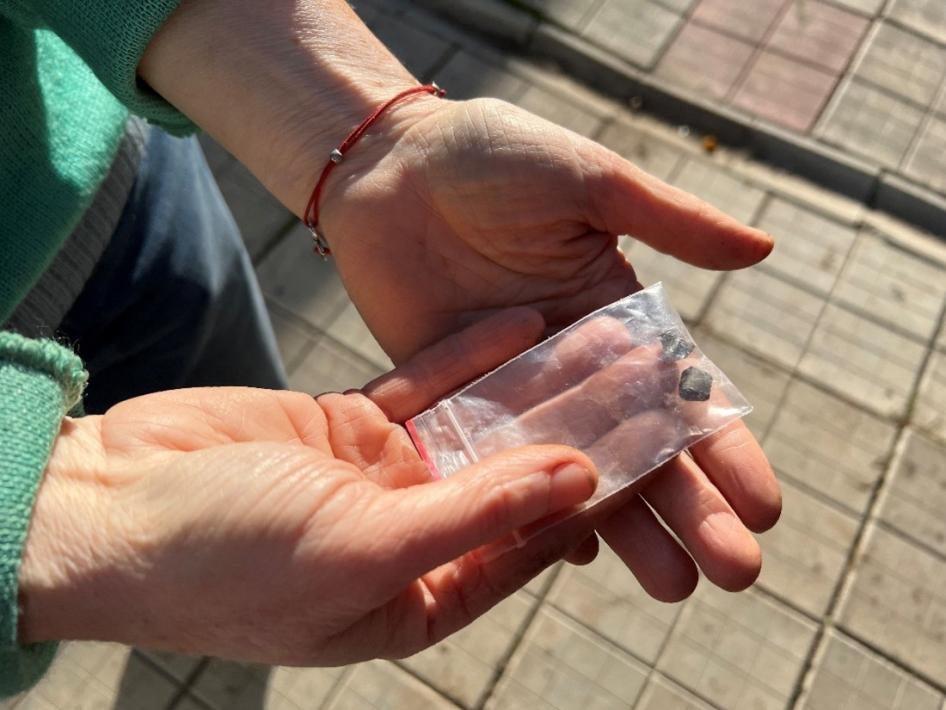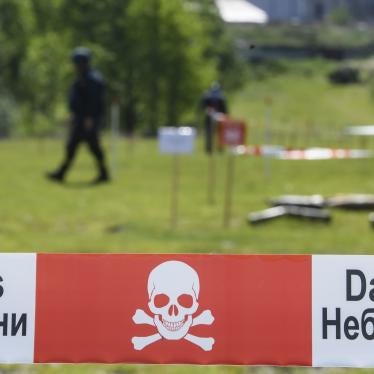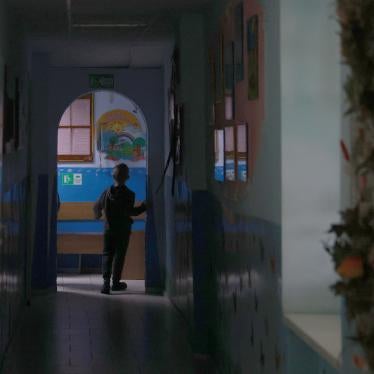Update: On June 7, 2023, the US Department of Defense announced that President Joe Biden had signed a “determination” that the transfer of cluster munitions to Ukraine was necessary for the national security interests of the United States. He authorized the transfer of an unspecified number of cluster munitions that have a greater than one percent unexploded ordnance rate to the Ukrainian Armed Forces.
As of July 10, leaders from at least eleven countries expressed concern over the decision: Austria, Belgium, Cambodia, Canada, Germany, Italy, Laos, New Zealand, Norway, Spain, and the United Kingdom. The United Nations secretary-general also made public his concerns.
Following the US announcement, Ukrainian Defense Minister Oleksii Reznikov presented five principles that he said the armed forces would respect upon receiving the cluster munitions: use them only in Ukraine; not use them in “urban areas (cities)” but only “in the fields where there is a concentration of Russian military”; keep a strict record of where the munitions were used; conduct clearance activities after the de-occupation of the areas where the munitions were used; and report to partners on the use of the munitions and their efficiency.
- Ukrainian forces have used cluster munitions that caused deaths and serious injuries to civilians. Russian forces have extensively used cluster munitions, causing many civilian deaths and serious injuries.
- Cluster munitions used by Russia and Ukraine are harming civilians now and will leave bomblets behind that will continue to do so for many years.
- Both sides should immediately stop using cluster munitions and not seek to obtain more of these indiscriminate weapons. The US should not transfer cluster munitions to Ukraine.
(Kyiv, July 6, 2023) – Ukrainian forces have used cluster munitions that caused numerous deaths and serious injuries to civilians, Human Rights Watch said today. Russian forces have extensively used cluster munitions in Ukraine, killing many civilians and causing other serious civilian harm.
New Human Rights Watch research found that Ukrainian cluster munition rocket attacks on Russian-controlled areas in and around the city of Izium in eastern Ukraine during 2022 caused many casualties among Ukrainian civilians. Both countries should stop using these inherently indiscriminate weapons, and no country should supply cluster munitions because of their foreseeable danger to civilians.
“Cluster munitions used by Russia and Ukraine are killing civilians now and will continue to do so for many years,” said Mary Wareham, acting arms director at Human Rights Watch. “Both sides should immediately stop using them and not try to get more of these indiscriminate weapons.”
The US government is reportedly close to deciding whether to transfer stockpiled cluster munitions to Ukraine, which would require approval by President Joe Biden. Transferring these weapons would inevitably cause long-term suffering for civilians and undermine the international opprobrium of their use, Human Rights Watch said.
Human Rights Watch visited Izium and nearby villages from September 19 to October 9, 2022, to investigate Russian abuses against Ukrainian civilians during the Russian occupation, including arbitrary detention, torture, and summary executions. Human Rights Watch interviewed over 100 people, including victims of abuses, witnesses, emergency services personnel, and health professionals. Almost all of them said that they had seen fragments from submunitions that had detonated around their homes during the Russian occupation.
Ukrainian cluster munition rocket attacks in the city of Izium in 2022 killed at least eight civilians and wounded 15 more, Human Rights Watch said. The attacks occurred in Izium and surrounding areas where Russian forces had arrived in March, seized control by early April, and remained in control until early September. A United Nations report also found that Ukrainian armed forces used cluster munitions in attacks on Izium between March and September 2022.
The total number of civilians killed and wounded in the cluster munition attacks that Human Rights Watch examined is most likely greater. Russian forces took many injured civilians to Russia for medical care and many had not returned when Human Rights Watch visited. An ambulance driver said he and his colleagues had regularly transported and treated civilians, including children, with cluster munition injuries during the Russian occupation. He estimated that he took at least one such case to the hospital every day.
A man from the village of Hlynske said that in May 2022 he heard a cluster munition rocket strike near his home. “[S]uddenly I heard my father screaming, ‘I’ve been hit! I can’t move,’” he said. “I ran back and saw that he had fallen on his knees but couldn’t move from the waist down, and there were many metal pieces in him, including one sticking out of his spine and another in his chest. He had these small metal pellets lodged in his hands and legs.” The man’s father received medical treatment but died a month later after undergoing surgery.
Cluster munitions can be delivered by aircraft or ground-launched missiles, projectiles, and rockets. They open in mid-air and disperse dozens and even hundreds of smaller submunitions, also called bomblets, over an area the size of a city block. Many submunitions fail to explode on initial impact, leaving duds that act like landmines, posing a threat to civilians for years and even decades.
Cluster munitions are comprehensively banned by the Convention on Cluster Munitions, which 123 countries have joined, although not Russia or Ukraine. Regardless, the use of cluster munitions in areas with civilians makes an attack indiscriminate in violation of international humanitarian law, and possibly a war crime.
Human Rights Watch examined photos taken by residents of 13 carrier sections or engines from Uragan cluster munition rockets that had struck Izium during the Russian occupation. Each 9M27K-series Uragan rocket has a range of 10 to 35 kilometers and delivers 30 submunitions. During the period investigated, Ukrainian frontline positions were always within that range. The position of carrier sections found still in the ground indicated that they came from the direction of Ukrainian positions.
On June 6, Human Rights Watch wrote to Ukraine’s defense minister with a summary of its findings, a request for a meeting, and several questions. On June 22, the Defense Ministry responded in writing, saying that “cluster munitions were not used within or around the city of Izium in 2022 when it was under Russian occupation.”
Under the Geneva Conventions of 1949, applicable to the armed conflict in Ukraine, all parties have an obligation to investigate and appropriately prosecute alleged war crimes by their forces or on their territory.
Ukraine has publicly asked to be supplied with cluster munitions. Several US lawmakers have called for the Unite States, which is not a party to the Convention on Cluster Munitions, to transfer stockpiled cluster munitions to the Ukrainian government. Under US arms export rules, the United States can only export cluster munitions that “after arming do not result in more than one percent unexploded ordnance across the range of intended operational environments.” This provision can be waived by the US president in exceptional circumstances to allow for transfers of cluster munitions with higher failure rates.
The cluster munitions that the United States is considering sending to Ukraine are more than 20 years old, scatter over a wide area, and have a notoriously high failure rate, meaning they could remain deadly for years. Their use in US combat operations in 1991 and 2003 in Iraq resulted in casualties among civilians and US military personnel.
For the transfer, Ukraine would have to agree that the cluster munitions “will only be used against clearly defined military targets and will not be used where civilians are known to be present or in areas normally inhabited by civilians.”
“The US government should not be providing cluster munitions to any country due to the foreseeable and lasting harm to civilians from these weapons,” Wareham said. “Transferring cluster munitions disregards the substantial danger they pose to civilians and undermines the global effort to ban them.”
Human Rights Watch co-founded and chairs the Cluster Munition Coalition, the global coalition of nongovernmental organizations working to promote universal adherence to the 2008 Convention on Cluster Munitions.
For additional details about cluster munition attacks in Izium, please see below.
Human Rights Watch reported in a May 2023 background briefing that hundreds of Russian cluster munition attacks have been credibly alleged in at least 10 of Ukraine’s 24 regions since Russia’s full-scale invasion in February 2022. Human Rights Watch has documented hundreds of civilian casualties from Russian cluster munition attacks in the Chernihivska, Donetska, Kharkivska, Khersonska, and Mykolaivska regions. A Human Rights Watch report detailed the April 8, 2022 strike by a Russian Tochka-U ballistic missile with a cluster munition warhead on a crowded train station in Kramatorsk that killed at least 58 civilians and injured over 100 others, one of the single deadliest incidents for civilians.
Ukraine stockpiles cluster munition rockets and used them in eastern Ukraine in 2014 and 2015. The New York Times reported that Ukrainian forces used Uragan cluster munition rockets in an attack on Russian-controlled Husarivka in Kharkivska region in March 2022.
Ukrainian Cluster Munition Attacks in Izium, March-July 2022
In September and October 2022, Human Rights Watch visited 26 homes and apartment buildings in and around the city of Izium that had been hit by cluster munition attacks while the areas were under Russian occupation and found submunition remnants and fragmentation patterns, as well as damage to windows, walls, gates, and neighboring homes. In each location, residents identified nearby positions that Russian or Russian-linked forces had been using at the time of the attack, indicating that these forces were most likely the target. Human Rights Watch was unable to determine if any Russian soldiers were injured or killed in these attacks.
Five people who were not at home at the time of the attack said they had returned to find cluster munition remnants and damage to their houses, including fragmentation patterns that Human Rights Watch found to be consistent with the detonation of fragmentation submunitions.
Fourteen people showed Human Rights Watch pieces of 9N210 or 9N235 fragmentation submunitions that they found in and around their homes after the attacks, including tail fins and fragments of chopped steel rod that the submunitions disperse upon impact. Over a dozen more people accurately described submunition fragments they said they had found. Nineteen people said that they heard multiple explosions in quick succession at the time of an attack, indicating the detonation of multiple submunitions delivered in cluster munitions.
Human Rights Watch has identified most of the civilians killed in cluster munitions attacks that the researchers investigated in and around Izium. Pseudonyms are used for people interviewed who did not wish to be identified.
Izium, March 2022
At least one Ukrainian civilian was killed and another injured in a cluster munition attack on the left bank of the Siverskiy Donets River in Izium on an undetermined evening in March 2022. Residents said Russian forces had already seized control of that part of the city. Two residents said they heard a series of explosions in the early afternoon. One of them, “Nikolaii,” said that his wife went to check on the family next door because she had seen them cooking in the yard. He did not know their names as they had only recently moved in but said that the family consisted of a woman, her mother, around 50-years-old, and her young daughter. When his wife went to the house, he said, she found the woman lying dead on the ground, covered in blood. Nikolaii and his wife buried her in the garden and helped the woman’s mother, who was injured, get to the hospital.
Human Rights Watch saw marks on the walls consistent with damage patterns caused by cluster munition detonations. Neighbors showed pieces of fragmentation submunitions they said they had collected in the area after the attack. Human Rights Watch also saw the grave in the garden where neighbors said the woman was buried. Nikolaii and the other neighbors did not know if the woman’s mother survived or what happened to the young daughter, who was not injured in the attack.
Hlynske, April 2022
In the village of Hlynske, four kilometers north of Izium, a villager named “Orest” said that, starting in April, his single-family home, where he lives with his mother, was repeatedly damaged by exploding submunitions. He said that one morning in April, at least 12 submunitions hit his home when Russian forces had come to question him and search the house. The cluster munition attacks continued “almost every day” while the area was under Russian occupation, but neither he nor his mother were injured. He said he identified the incoming munitions by the type of explosions and remnants left from the attacks.
Human Rights Watch identified two Uragan-series rocket cargo sections designed to exclusively carry 9N210 or 9N235 submunitions. One was in his neighbor’s garden and another was still stuck in the ground at an angle that indicated it was fired from the west.
Orest showed two fragments of black tail fins and preformed metal fragments that he said he had collected after one of the attacks. Human Rights Watch confirmed that these remnants were from 9N210 or 9N235 submunitions. He also showed damage to his walls and windows, which he said was caused by the attacks. The damage signatures were consistent with attacks by the 9N210 or 9N235 submunitions.
Izium, April 5, 2022
A cluster munition attack on or about April 5, 2022, injured eight people, including a two-year-old child, in a residential neighborhood on the left bank of the Siverskiy Donets River in Izium. The attack site was approximately 300 meters from Izium’s School No. 6, which Russian forces had occupied from March to July, eight area residents said. One of the people injured, “Yura,” 28, lives in a single-story home next to a group of apartment buildings. He said that he was fixing the external wall of his house around noon that day when he heard explosions very close by. He ran toward his doorway and just as he entered his home, a metal fragment struck his left thigh. His son Ivan, two, was by the door, and metal fragments cut his head, face, and shoulder but the injuries were not serious. Yura showed Human Rights Watch his and his son’s scars from the injuries.
“Anton,” 52, who lived in a neighboring apartment building, said he was working in his garage about 100 meters away from the attack site, when he heard the explosions and ran toward his home. In between his apartment building and Yura’s home, he saw six people lying injured on the ground. He recognized four, who were next to a bench where neighbors often gathered to talk. While waiting with them for an ambulance, he saw their injuries: 38-year-old Rita’s leg was ripped open; 61-year-old Volodymyr’s foot was partially torn off; Olga, 59, had head and leg injuries as well as small cuts all over her body; and Natalia, 64, had a broken leg. Two women he did not know were lying on the ground a few meters away, with cuts on various parts of their bodies.
“Tetiana,” 62, and “Oksana,” 48, who lived in a nearby apartment building, said they saw the aftermath of the attack when they returned home shortly afterward. They provided similar descriptions of the scene, types of injuries, and the names of those injured.
Anton said that at his home he found metal fragments lodged in his window frame and in an interior mirror, as well as other fragments. Human Rights Watch inspected and identified these as coming from 9N210 or 9N235 submunitions. Damage was visible to the roofs, walls, and windows of five neighboring buildings, including those where Anton, Yura, Tetiana, and Oksana lived, consistent with the damage patterns caused by the detonation of submunitions.
Izium, May 9, 2022
At least three Ukrainian civilians were killed and another four injured in a cluster munition attack on a neighborhood on the right bank of the Siverskiy Donets River in Izium at about 7:30 p.m. on May 9, 2022. Three local residents who said they witnessed the attack said that Russian forces were occupying the former office of the SBU, the Ukrainian security service, less than 100 meters from where the submunitions hit. Russian armored vehicles were also parked throughout the area, they said.
One of the residents, “Daria,” said she was sitting on a bench outside her apartment building with her friend Sasha when she saw an incoming rocket. She jumped up and ran into the basement, but her friend stayed on the bench. A neighboring family was outside using a makeshift outdoor kitchen near the entrance to the building, cooking with their friend Dasha, 36, and her eight-year-old daughter. Daria said she heard explosions and then screams. Minutes later, several submunitions exploded on and around her and her neighbors’ homes.
As she came out of the basement she saw that a metal fragment had pierced Dasha’s chest and realized that Dasha was dead. Three members of the neighboring family were also injured, including the father, daughter, and son who has cerebral palsy and uses a wheelchair. Sasha was hit in the head by a fragment and died.
“Lilia,” who said she was standing outside her home in the same building at the time of the attack, said that a submunition hit the side of her home, damaging the window, and a fragment struck her in the right buttock.
Human Rights Watch saw blood still smeared on the stairs leading down to the basement, which residents said was where Dasha lived. Damage patterns caused by submunition detonations were visible on Daria’s building and on another building about 20 meters away.
A doctor who was working at the time of the attack said that a 59-year-old neighbor was also injured in the attack and later died. He said he treated the neighbor’s wife, who was also injured and was transferred to Russia for further medical treatment.
Izium, May 17, 2022
On the morning of May 17, 2022, in Izium on the left bank of the Siverskiy Donets River, an Uragan cluster munition rocket punched through the wall of the single-story home of “Anatolii,” killing his 44-year-old son “Volodymyr.”
Anatolii said he was outside walking just meters from his house when he heard multiple explosions. He rushed into his house and then into his son’s room, where he saw a hole in the wall and in the floor. He said:
Half of my son’s body was in the hole in the floor and his legs were sticking out. His right arm had been ripped off and was in pieces. He was whimpering and his eyes were cloudy. I begged my neighbor to take him to the hospital, but he was too scared to, so I had to beg the Russian soldiers to take him. That cost us an hour-and-half. During that time [Volodymyr] lost so much blood that he died.
A neighbor said she heard multiple explosions and the thud of something hitting a home very close by that morning:
After the attack we all ran outside to see what had happened, I ran to [Anatolii]’s house because I heard screaming. I saw [Volodymyr]’s body in his room. He had been sleeping on the couch. He had a big metal piece in his head and his right arm had been totally ripped off. We begged neighbors to take him to the hospital, but they refused because they were too scared. It took too long to get him there. I think that’s why he died.
Human Rights Watch examined Volodymyr’s room in October 2022 – the family had sealed it off after his death. The rocket motor section of an Uragan-series rocket stuck deep in the ground below the floorboards at an angle that indicates the weapon had been fired from the west into the city. The hole in the roof also indicated that the weapon was traveling from west to east when it struck the house. Human Rights Watch also found remnants of the carrier section of the rocket with markings indicating that it contained explosive submunitions.
Another of Anatolii’s neighbors, “Vadym,” said he heard multiple explosions and then Anatolii came running over, screaming for help. He said Volodymyr’s body and the couch had sunk into the hole created by part of the cargo section of the rocket.
Vadym said this was one of at least two cluster munition attacks on the area. He showed Human Rights Watch remnants consistent with 9N210 or 9N235 submunitions, including black tail fins and preformed metal fragments, as well as damage to his walls and windows, which he said was caused by the May 17 attack, and an earlier attack on the morning of May 5.
Vadym said that on May 5:
I was lying in bed when I heard a rumble, so I threw a blanket on my head and started praying. Then I heard the explosions and my mother, who was in the garden, came running inside. The carrier of the rocket broke through the ceiling of our kitchen and split the kitchen table in half. I was just waiting for my death.
He heard six smaller explosions during the attack. When he came out of his room, he saw that one submunition had blown a hole through a metal pot in the kitchen, which he showed to Human Rights Watch. Another metal fragment had blown a hole through a tire in front of his house. He said his two-year-old dog was injured in the attack – a metal fragment punctured her lung and he had to put her down.
Vadym and five other neighbors said that several Russian military positions and checkpoints were within 500 meters of their street.
Hlynske, May 30, 2022
A Ukrainian civilian died after a cluster munition attack near the village of Hlynske on May 30, 2022. At the time, Russian forces were based at a large farm in the village. “Andrii,” 81, lived about 250 meters from the occupied farm. His son “Oleksii,” 49, said he was sitting in his father’s yard at around 4:30 p.m. that day and his father was in his field behind the house tending to a cabbage patch when he heard a whistling sound and then four explosions in quick succession. His father was struck by many metal fragments, including in his back.
Oleksii showed Human Rights Watch the fragments of six black tail fins from submunitions that he said he found in the field and around the house after the attack. He said that Russian forces came from the nearby farm with a medic and transported Andrii to Izium’s Central Hospital. They then took him by helicopter to the Russian city of Belgorod, Oleksii and his brother said, where he underwent multiple surgeries to remove metal fragments from his hands, legs, and back. On June 30, Andrii underwent surgery again but died the next day. Human Rights Watch saw medical records from the Belgorod hospital confirming Andrii’s injuries and treatment there, plus his death certificate.
Izium, June 9, 2022
At least two Ukrainian civilians were injured in a cluster munition attack at about 8 a.m. in Izium on June 9, 2022. The attack struck about two streets away from the site of the May 9 attack. Three residents who witnessed the attack said they noticed Russian forces at the former SBU headquarters less than 100 meters away. Two of the witnesses were injured in the attack and the third saw them lying on the ground outside her home and provided first aid, then stopped a passing car to take them to the hospital.
“Anna” and her husband, “Vitalii,” said they were riding bicycles when they saw a series of explosions in front of them. Vitalii, with blood streaming from his chest, fell to the ground. “He was screaming that we needed to get to the military or to someone else who could help us,” Anna said. Anna was wounded in the leg.
Anna and Vitalii were transported to the hospital in another resident’s vehicle. At the hospital, Russian forces evaluated Vitalii’s injuries and flew him by helicopter to a hospital in Russia, where he underwent several surgeries to remove metal fragments from his leg and back. His finger, ribs, and lungs were also injured. Vitalii returned home three weeks later. He showed Human Rights Watch his injuries, including scars from metal fragments that he said were still embedded in his back, next to his spine.
July 2022
A woman living near Mount Kremenets, a monument hill on the right bank of the Siverskiy Donets River south of Izium, was killed in a cluster munition attack at about 10 a.m. in late June or early July 2022. “Mykhailo,” in his 70s, who lives near Mount Kremenets, said that the area was attacked with cluster munitions multiple times while Russian forces controlled the area. Mykhailo said that one morning, on a date he could not remember, he was leaving his home to get bread for himself and his neighbor, Sima, 76, when one attack occurred, “I was just exiting my gate when I heard five quick, loud explosions. Sima had been sitting in her garden. She was killed immediately because one of the cassettes [cluster munitions] exploded right next to her.”
Mykhailo showed Human Rights Watch two houses 10 meters away from Sima’s home, where he said Russian forces had been based for several months, including at the time of the attack. He said that immediately after the attack, Russian soldiers from the neighboring homes came to take Sima to an ambulance but told him they found she was already dead. Her home, as well as the walls and windows of the houses that Russian forces had been using, showed damage consistent with the damage patterns of cluster munition detonations. Mykhailo described black tail fin fragments that he said he had found after the attack on the ground in her garden.
Izium, July 14, 2022
A Ukrainian woman was killed in a cluster munition attack on July 14, 2022, at about 10:30 a.m. on the right bank of the Siverskiy Donets River in Izium. Several local residents, including the woman's mother, said they witnessed the attack. All said they heard multiple detonations. One resident who lived about 150 meters away from where the woman was killed was outside at the time: “The attack was very scary. Very loud. I was outside and there were a lot of explosions. The wife of my ex-husband came and told me to hurry to get inside.”
“Her face and body were severely mutilated by the explosion,” said a neighbor who saw the woman’s body. “We buried her in the central cemetery.” Human Rights Watch found damage signatures consistent with submunition impacts on the front side of the woman’s house and on other houses nearby. Significant damage was visible to the roof of the house near the front door that residents said was from the attack and where the woman and her dog were found dead.
Residents who also witnessed the attack said that Russian forces were based for the duration of the occupation, including at the time of the attack, in a large building in the residential neighborhood less than 150 meters on the same street where the woman was killed. Human Rights Watch observed spray-painted markings, such as the letter “Z” used by Russian forces, on the street-facing exterior doors that residents said Ukrainian forces painted over when they retook Izium.
